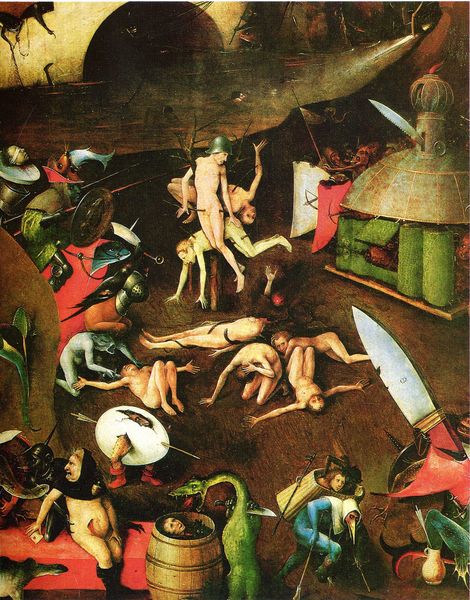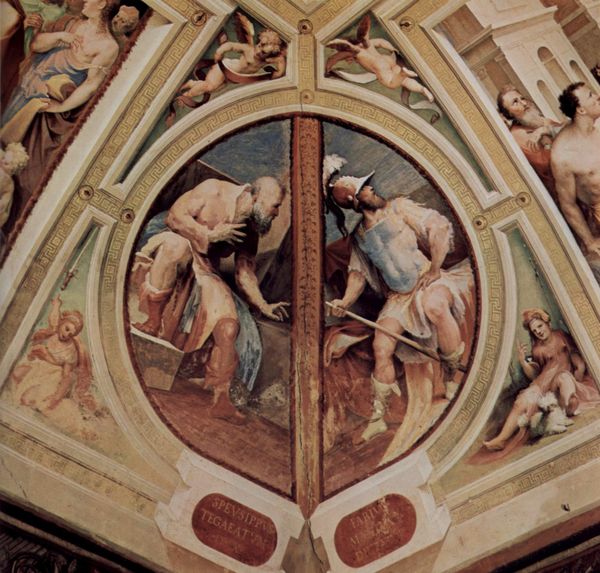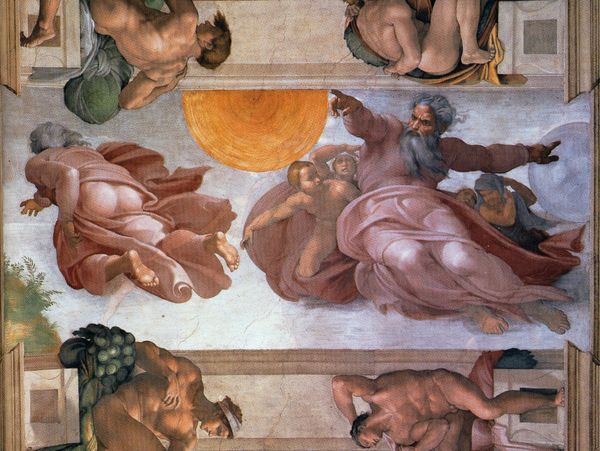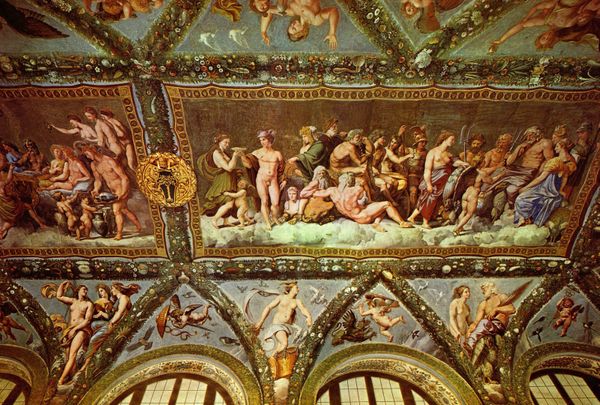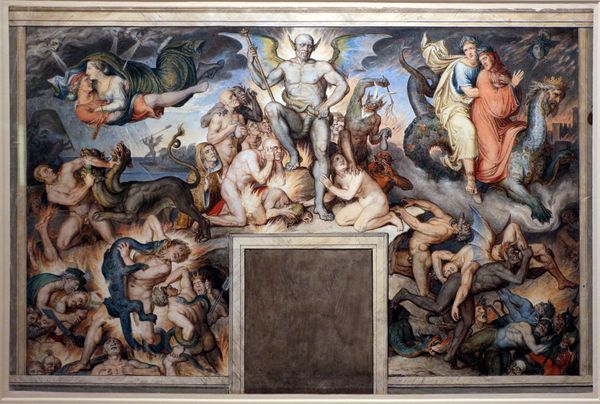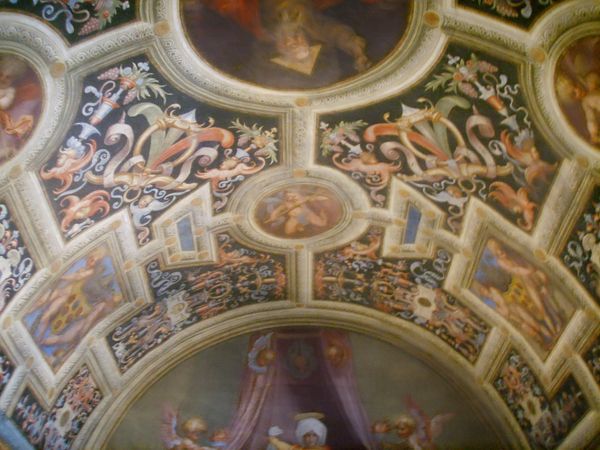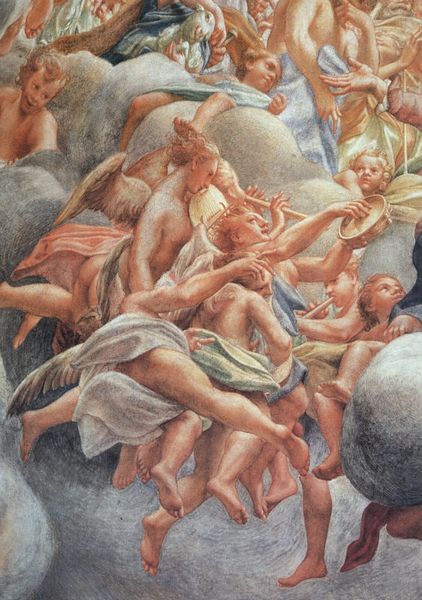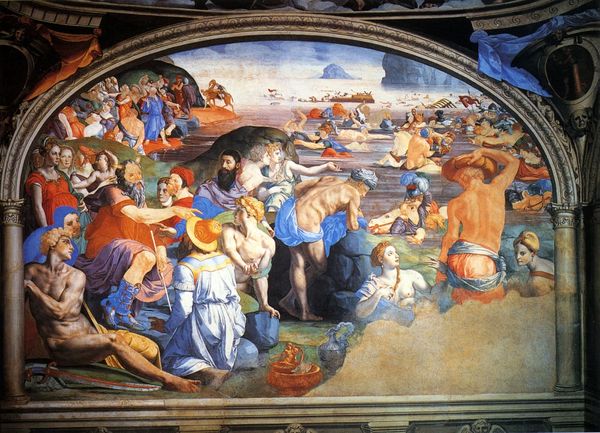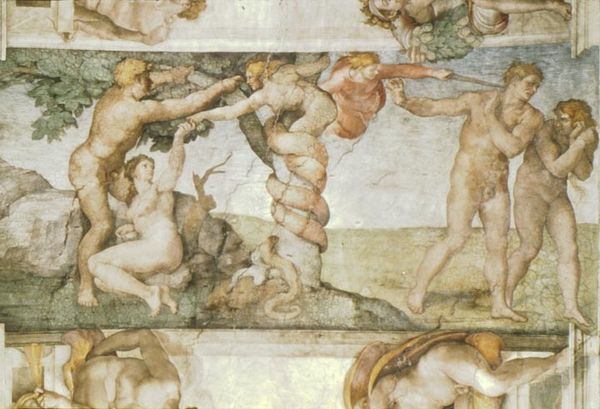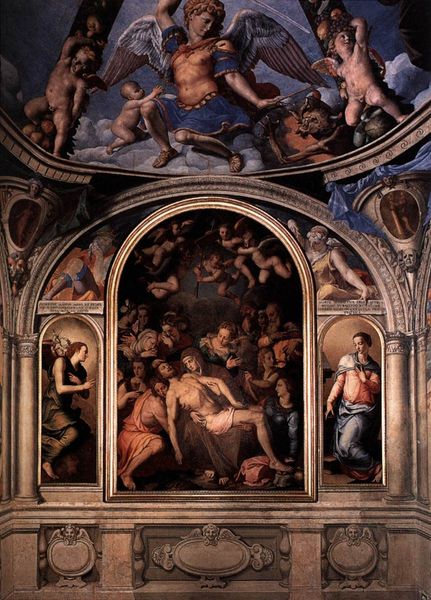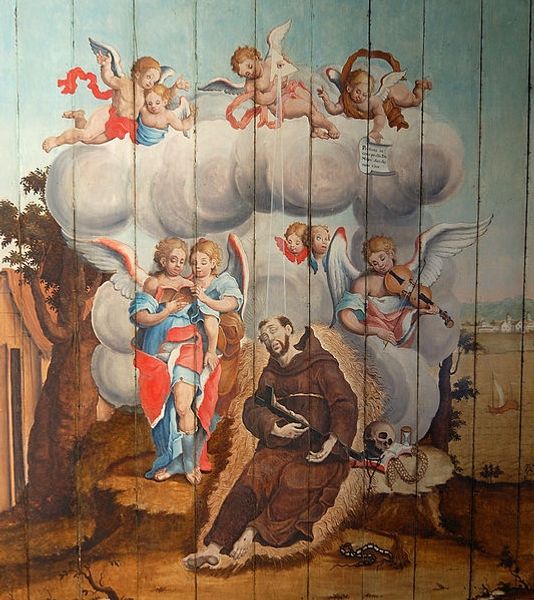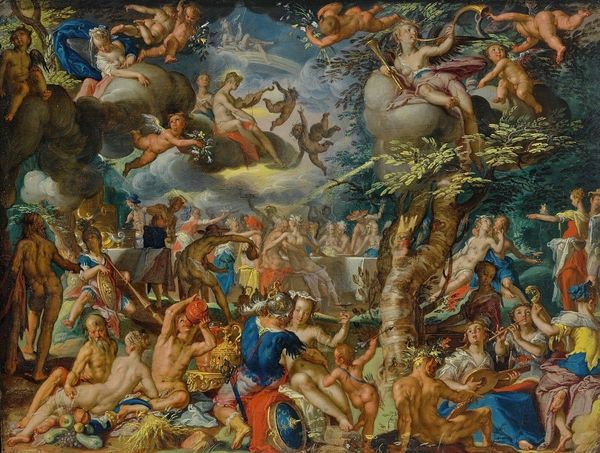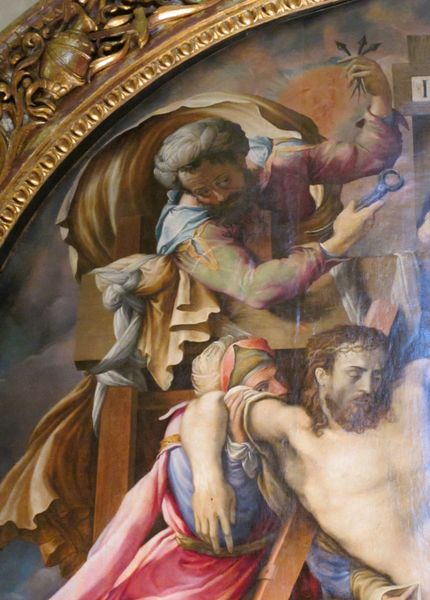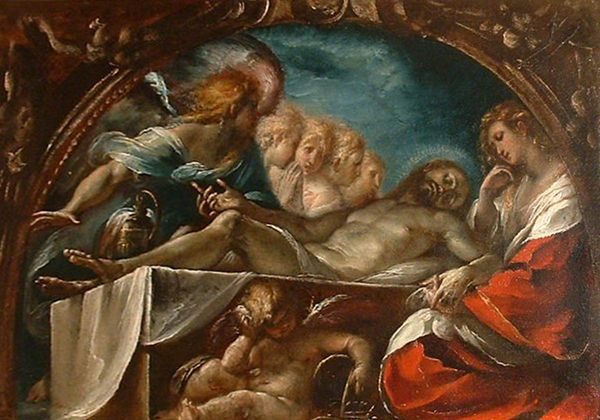
Copyright: Public domain
Curator: Here we have a detail from "Anjos Músicos" – Musical Angels – by Mestre Ataíde, an oil on mural from 1807. Editor: It feels wonderfully exuberant, despite the obvious aging of the paint. A cascade of cherubic figures dominates, giving off an atmosphere of celestial celebration. Curator: The composition is certainly complex, with layers of cherubic musicians arranged almost haphazardly across the pictorial plane. Note the asymmetry and the use of varied tonalities. It disrupts any sense of formal rigidity that could exist. Editor: Absolutely. And their instruments – flutes, lutes, even a rather primitive-looking trumpet – all point to the importance of music as a symbol of harmony and divine order within this Baroque vision. There’s an echo of classical ideas but transformed through the colonial Brazilian context. Curator: The brushwork is fascinating too, especially the use of contrasting pigments, seemingly dashed together creating both depth and animation on a surface intended to trick the eye, opening upwards in this architectural space. Editor: I'm struck by how the angels’ expressions vary. Some seem completely absorbed in their music, others gaze out as if acknowledging the earthly audience, inviting the faithful to participate in this otherworldly concert. A bridge, perhaps, between heaven and earth rendered in pigment? Curator: An interesting suggestion. Though I'd argue it’s equally valid to interpret it purely through its formal design – the tension created between surface and depth, between clarity and blurriness within the figures…a structural rhythm if you will. Editor: Perhaps, but their rosy cheeks, innocent faces, they speak volumes about innocence, hope, and divine favor. Each angel, a small visual prayer embedded in this grand scheme. It is difficult to separate their meaning as figures, from the more tangible aspects of Ataíde’s skill as an artist. Curator: Ultimately, "Musical Angels" serves as a captivating example of the colonial Baroque and offers a unique insight into the dialogue between form, content, and context in Brazilian art. Editor: Indeed. Ataíde created more than just a decorative piece; he offered a visual embodiment of cultural aspirations and spiritual values resonating still today.
Comments
No comments
Be the first to comment and join the conversation on the ultimate creative platform.
